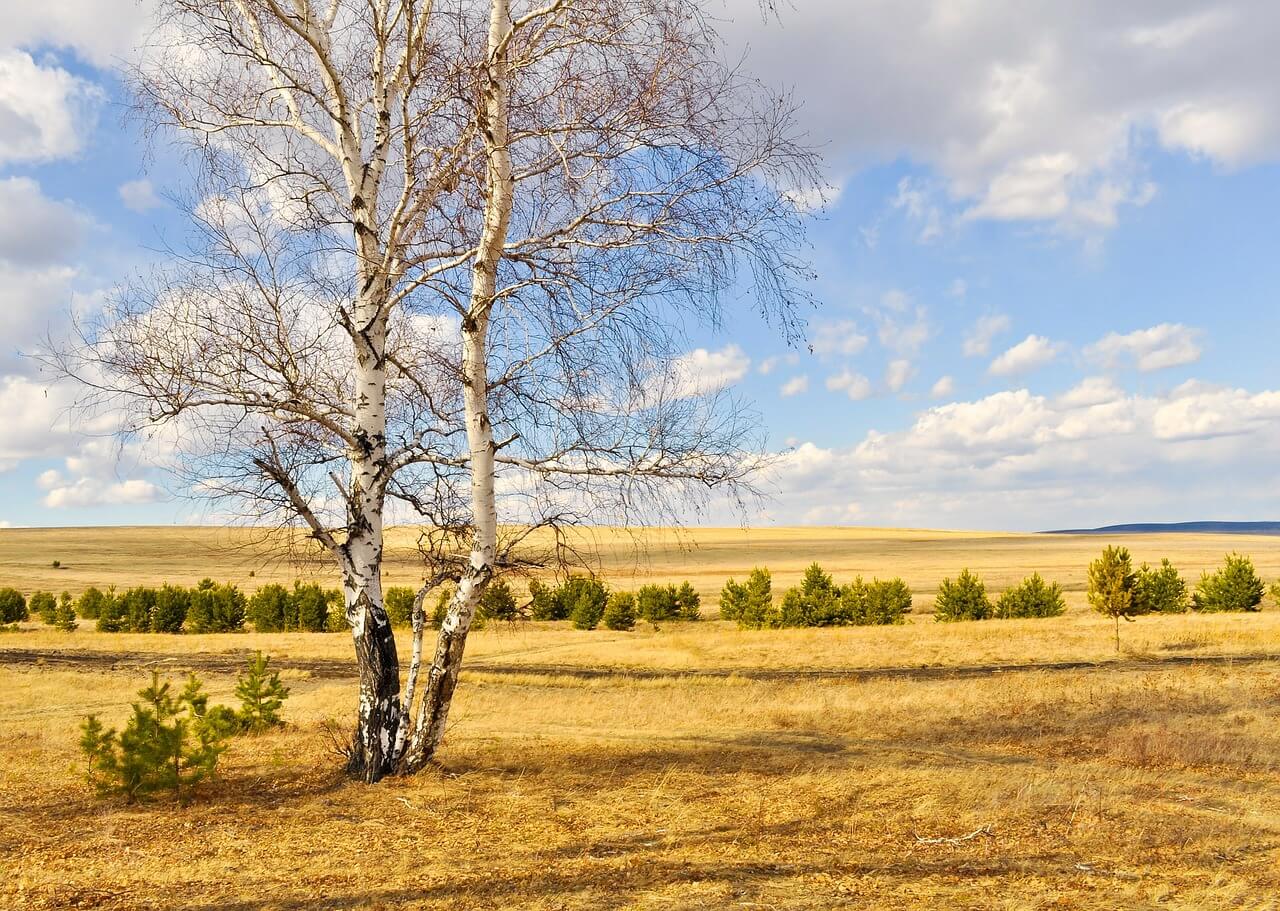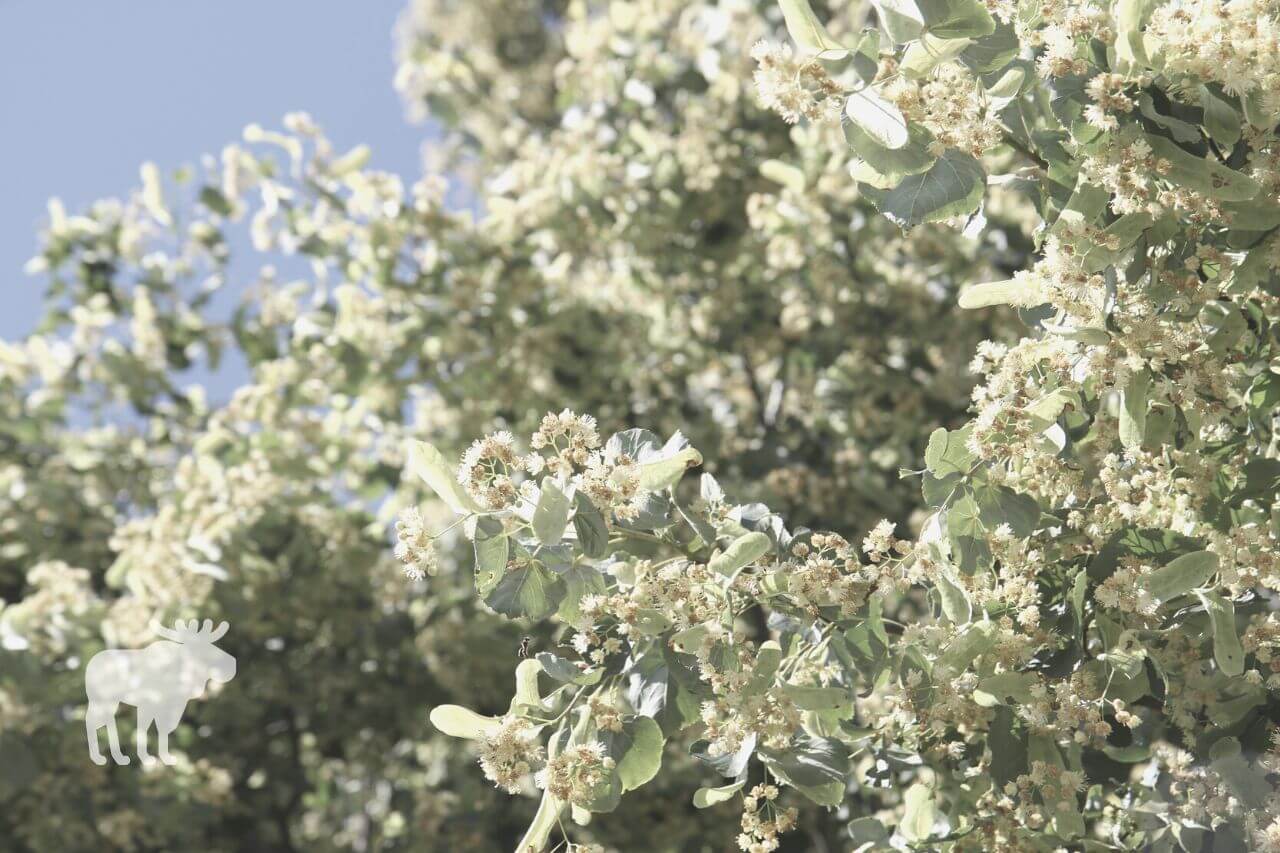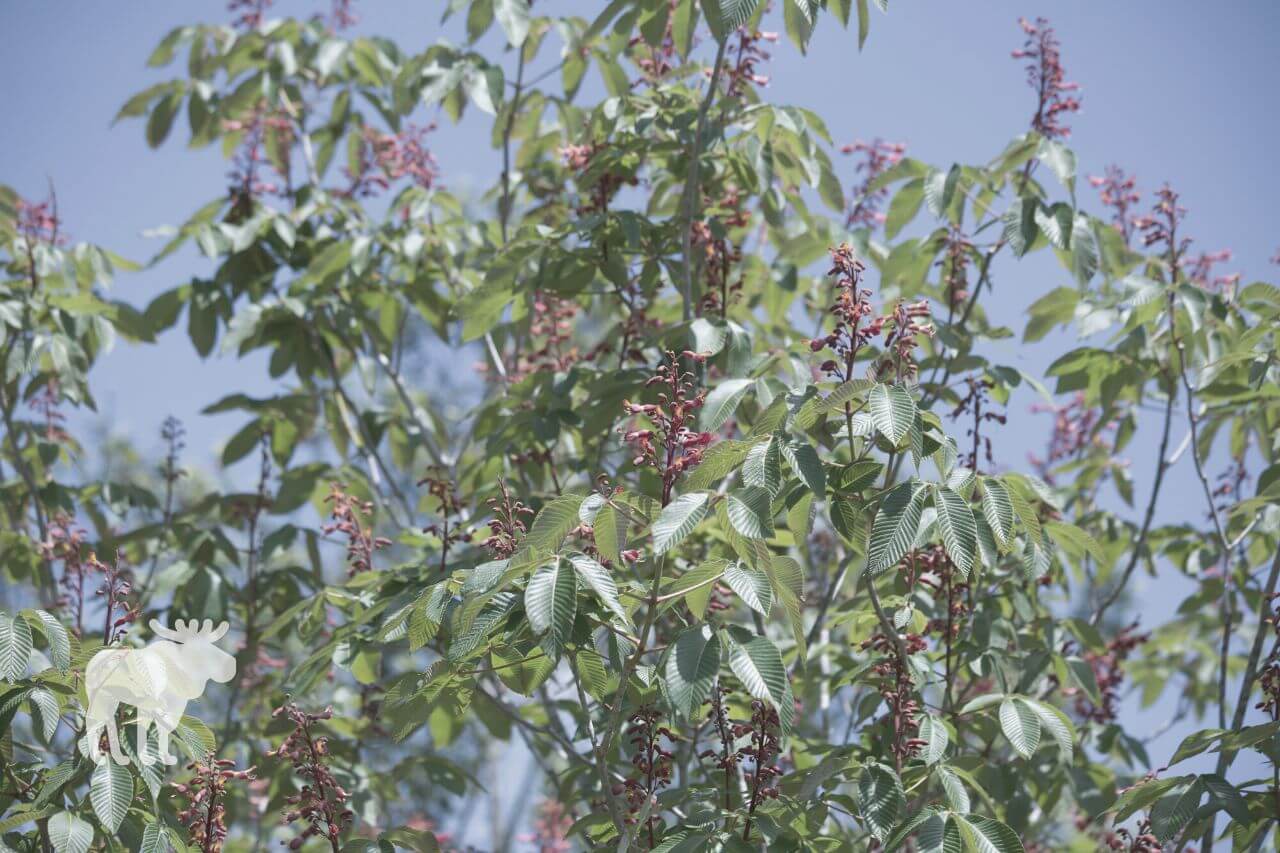Throughout the world, there are a number of different trees that start with the letter B. Many of them are quite unique and have nothing in common with each other except for this first letter of their name. Let’s take a closer look at some of these trees.
What You'll Learn Today
Trees That Start With the Letter B
1. Birch

There are as many as 60 species of birch trees in the world, some of which are considered threatened species. They are found throughout the Northern Hemisphere, especially in northern temperate and boreal climates.
Birch trees are often confused with aspens, as they are quite similar in appearance. They have papery white or gray bark and simple, serrated, triangular leaves that typically turn bright yellow in the fall.
Birch trees have many uses, from hardwood and plywood applications to use in speakers. It produces a sap that can be turned into syrup, a lightweight bark Native Americans have used to make canoes, and parts of the tree can even be used for food and medicinal purposes.
2. Balsam Fir

Balsam fir trees are found in northern temperate regions of North America. They are especially common in eastern parts of Canada and northeastern regions of the United States.
These pretty evergreens are often grown as Christmas trees. They have dark green, thickly-needled branches, and they tend to grow naturally in a pyramid shape.
Balsam firs can grow between 45 and 90 feet tall if allowed to reach maturity. They tend to grow best in mixed forests with plenty of available water.
These trees are rich in vitamin C, so they are sometimes used as a natural remedy for various ailments. The fragrant oil is also used in aromatherapy and air fresheners.
Check out this video to learn more about these trees:
3. Box Elder
Box elder trees are native to North America, but they have been introduced throughout much of the world. They reproduce rapidly and can grow in a wide variety of environments.
Box elders belong to the maple family; however, they don’t look like most maple trees. They tend to have multiple trunks growing from a common base, and they produce pinnately compound leaves that turn yellow in autumn.
Box elder trees are sometimes cultivated for ornamental purposes because they are easy to grow and only reach medium heights. They have soft wood that is susceptible to storm damage, and the trees are often targeted by large colonies of box elder bugs.
4. Beech
Beech trees are common throughout much of the Northern Hemisphere. There are around 13 species, all of which can grow in a variety of well-draining soil types.
Beech trees have thin, delicate bark that doesn’t heal well when damaged. The trees produce large, spreading canopies of thick green leaves, and in the fall, they release edible fruits called beechnuts or mast.
Beechwood is used in fermenting beer, smoking some meats, and making certain types of cheese. The wood can also be used for various purposes such as furniture, household items, and musical instruments.
5. Basswood

Basswood trees are native to eastern parts of North America. They are sometimes called linden trees.
These trees can grow over 120 feet. They are strong and densely-foliaged, often used as windbreaks and coveted for producing excellent shade.
The leaves are simple and triangular; some can grow quite large. The bark is gray to light brown in color, and the tree produces small, fragrant flowers that turn into sticky nutmeats.
Wood from basswood trees is commonly used in furniture and other household items, including instruments such as electric guitars. The leaves, flowers, and fruits have medicinal properties.
6. Buckeye

Buckeye trees are common throughout temperate regions of the Northern Hemisphere. They are also referred to as horse chestnut and conker trees.
These trees tend to be fairly small, with some species only growing to the size of large shrubs. They have distinctive-looking, palmately compound leaves, and they produce showy flower clusters that mature into seeds that look like chestnuts.
The seeds, and other parts of the tree, are inedible and somewhat toxic. The seedlings have been known to kill cattle that accidentally ingest them while grazing.
7. Baobab
Baobab trees are unique-looking plants found in Africa and Australia. There are nine species of baobab, and they are typically found growing in arid environments.
These trees are most well-known for their massive and distinctive-looking trunks. Due to the harsh growing conditions in their native habitats, they use these trunks to store large amounts of water.
Baobab trees have compound leaves with the leaflets often arranged in a circular pattern. They produce bulbous white flowers which mature into edible seed pods.
The leaves of these trees are edible as well. Various parts of the tree are used for such diverse products as fuel, dye, and cosmetics.
8. Banyan

Banyan trees are unique plants found in parts of Asia, particularly in India. They are closely related to fig trees.
Banyan trees are sometimes called stranglers due to the unique way they grow. They begin life in the canopies of other trees, sending roots downward and eventually “strangling” the trunk of their host tree.
Since much of their roots are exposed, a single banyan tree may give the appearance of being a forest of young saplings. These trees have glossy, elliptical leaves and produce edible, fig-like fruits.
9. Banana
There are about 70 species of banana trees. They grow natively in Asia and Australia but can grow in tropical and subtropical climates throughout the world.
Banana trees are not technically trees; however, they are considered some of the largest herbaceous plants, as they can grow up to 30 feet tall.
Banana trees produce large, fern-like leaves and clusters of flowers. These flowers then ripen into long, yellow, edible fruits.
Though they are most well known for their fruits, other parts of the plant can be eaten as well. These include the flowers, the heart, and the leaves.
Conclusion
There are a number of different trees beginning with the letter B. Some of these include birch, black walnut, beech, and baobab trees.